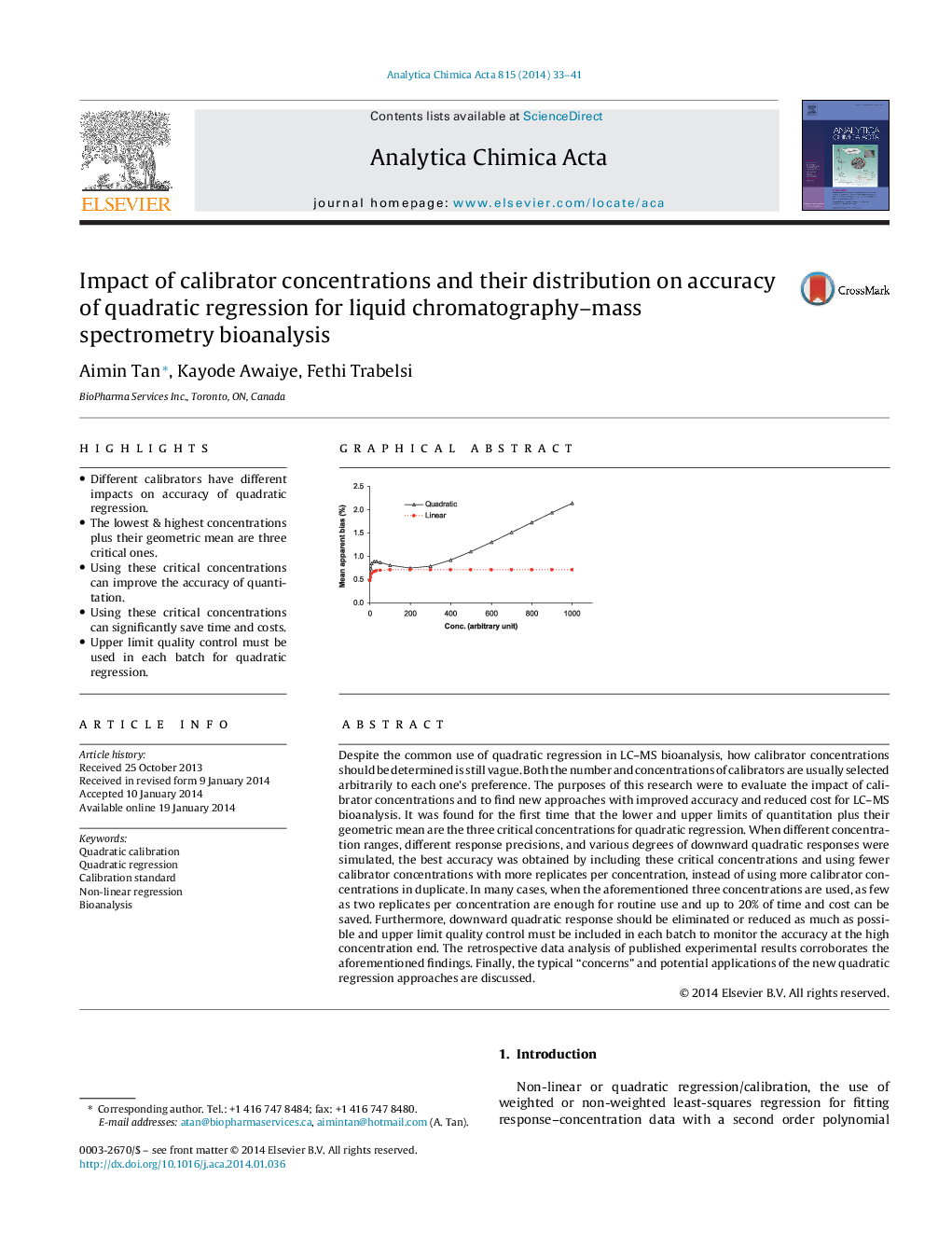| کد مقاله | کد نشریه | سال انتشار | مقاله انگلیسی | نسخه تمام متن |
|---|---|---|---|---|
| 1165114 | 1491017 | 2014 | 9 صفحه PDF | دانلود رایگان |
• Different calibrators have different impacts on accuracy of quadratic regression.
• The lowest & highest concentrations plus their geometric mean are three critical ones.
• Using these critical concentrations can improve the accuracy of quantitation.
• Using these critical concentrations can significantly save time and costs.
• Upper limit quality control must be used in each batch for quadratic regression.
Despite the common use of quadratic regression in LC–MS bioanalysis, how calibrator concentrations should be determined is still vague. Both the number and concentrations of calibrators are usually selected arbitrarily to each one's preference. The purposes of this research were to evaluate the impact of calibrator concentrations and to find new approaches with improved accuracy and reduced cost for LC–MS bioanalysis. It was found for the first time that the lower and upper limits of quantitation plus their geometric mean are the three critical concentrations for quadratic regression. When different concentration ranges, different response precisions, and various degrees of downward quadratic responses were simulated, the best accuracy was obtained by including these critical concentrations and using fewer calibrator concentrations with more replicates per concentration, instead of using more calibrator concentrations in duplicate. In many cases, when the aforementioned three concentrations are used, as few as two replicates per concentration are enough for routine use and up to 20% of time and cost can be saved. Furthermore, downward quadratic response should be eliminated or reduced as much as possible and upper limit quality control must be included in each batch to monitor the accuracy at the high concentration end. The retrospective data analysis of published experimental results corroborates the aforementioned findings. Finally, the typical “concerns” and potential applications of the new quadratic regression approaches are discussed.
Figure optionsDownload as PowerPoint slide
Journal: Analytica Chimica Acta - Volume 815, 7 March 2014, Pages 33–41
